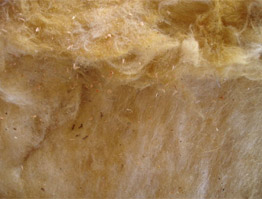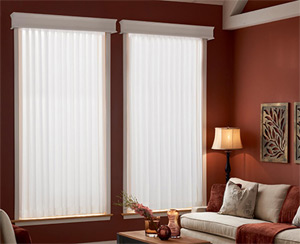In this post you will learn ...
How to Make Your Home More Energy Efficient
With all the climate change concern these days, it’s even more necessary to exercise home energy efficiency than ever before. By making some fairly simple changes around your home, not only will you conserve energy which will help save you money, but it will also add to your overall comfort, as well. Nobody likes a drafty house, or enjoys being in a home with moldy insulation, uncovered or frozen pipes, or exposed wiring protruding though the walls.
To keep you and your family comfortable and your friends and neighbors coming back to your dinner parties or movie marathons, save money in the process, and to assist a suffering environment, here are some quick and easy energy efficiency tips to protect your home.
You can make your home energy efficient by remembering three simple ideas:
- Seal
- Remove
- Add
Before you go through the first step however, ensure that your home does not have any black mold, or other pollutants that will get trapped in with you. Once you’ve ensured it is safe, start the first phase.
Phase 1: Find those air leaks and start sealing.
Sealing requires you to become an investigator of sorts. Your job is to seek out anything that leaks air contributing to your high energy costs. One of the biggest culprits is drafts throughout the house. Drafts come from doors and windows, wiring holes, plumbing vents, recessed lights, basement rim joists, or anything else that was not properly sealed during installation or is old and needs maintenance or replacement.
A good area to check is where two different materials meet, such as brick and wood, like where the wood frame of your home meets the concrete of the foundation or where your cable TV or phone lines enter your home. Your task is to seek these out and fix them. Many of these drafts can be remedied by giving the seams a nice steady bead of caulk. Caulk prevents water infiltration and keeps those joints sealed up nicely. For larger gaps, ¼-inch to 3-inches, a can of spray foam works nicely.
There are various types and grades of caulk and each has their advantages as well as disadvantages. The most popular types of caulk are latex and silicone, but there are many types of specialty caulks for projects ranging from driveway sealing to fireplace sealing and everything in between. Choose the right caulk based on the material and place you are sealing. Caulks also have varying grades. Commercial or professional grade tends to be more expensive but lasts longer than cheaper alternatives.
If you have drafts through or around your windows or doors, consider having them replaced. Poor quality, old or ill-fitting windows and doors can leak air in a variety of ways. Windows and doors that are not structurally reinforced will sag over time causing difficulty when opening or closing the sashes. Sagging windows and doors may not lock properly either causing further drafts and security issues. Look for a window that is fully reinforced, like Stanek Windows with full FIBERMAX™ reinforcement for optimum long-term performance.
Since windows are made using up to 90% glass, glass is one of the most important components, especially if you are trying to save energy and money. Glass, by nature, is a poor insulator. It’s used as a building material for its transparent properties. But to make glass energy efficient, many components need to be added like multiple panes, air tight seals, insulating gases, low-e coatings and more. It’s the added stuff that makes glass energy efficient. Stanek Comfort-Gard® XTREME high-performance glass is the most energy-efficient triple-pane glass on the market and has earned the highest energy-efficiency rating from ENERGY STAR®. Insulated with argon gas, it features warm-edge SuperSpacer® technology to help prevent seal failure and prohibit the transfer of heat.
Phase 2: Check home insulation. Remove and replace if necessary.
 What needs to be removed you may ask? You may have to find your way to your attic to answer that question. Look to the pink scratchy stuff for your answer, insulation. If you come in contact with your home insulation, be careful with skin contact and make sure you shower directly afterward.
What needs to be removed you may ask? You may have to find your way to your attic to answer that question. Look to the pink scratchy stuff for your answer, insulation. If you come in contact with your home insulation, be careful with skin contact and make sure you shower directly afterward.
Having the right insulation will increase energy efficiency dramatically. There are certain standards that insulation has to meet and it varies from state to state. Every area agrees though that insulation has to have an R-value between 30 and 60. This number represents how well insulation resists heat transfer. If it doesn’t repel it properly then heat and cool air are escaping out of your home.
You also may have to add an extra layer of insulation if your joists are exposed. Joists are the wood or metal beams that support the boards of your floor or ceiling. If you do see them, make sure the second layer of insulation does not have any paper on either side and roll it over the first layer. You want your insulation to blanket the floor, and you should barely see the studs when you glance down.
Also if your insulation has rips, or spots of mold, or has been exposed to leaks and is soggy, it should be thrown away. Having the proper amount of insulation will increase the energy efficiency of your home.
So remove any insulation that isn’t up to standard. Fiberglass insulation needs to be up to standard at 11 inches thick, if it is not, the insulation is bad, and like the brown Christmas tree still in its stand in the living room, it needs to be removed with extreme prejudice.
Phase 3: Finally, you can save energy by adding some vertical blinds to your home.

Installing blinds or shades over your windows can help add to your privacy but can also be a great way to block the sun from entering your home and heating up the place, especially in the summer. From roller and cellular shades to vertical blinds and curtains, a good set of blinds will help you keep your home cool and make your air conditioner work less, saving you money in the long run.
The good thing about blinds is there is no messy caulk, no examining, and no damp insulation to deal with. All you need is a screwdriver, something to measure with, and a good eye. After a few minutes your blinds are installed and you become the distributor of sunlight to your home. Can you handle all of that power?
By performing these simple tasks, you have already saved yourself future headaches. And by increasing your home’s energy-efficiency you will notice that your home is more comfortable, the bills are lower, and you’d helped the environment.